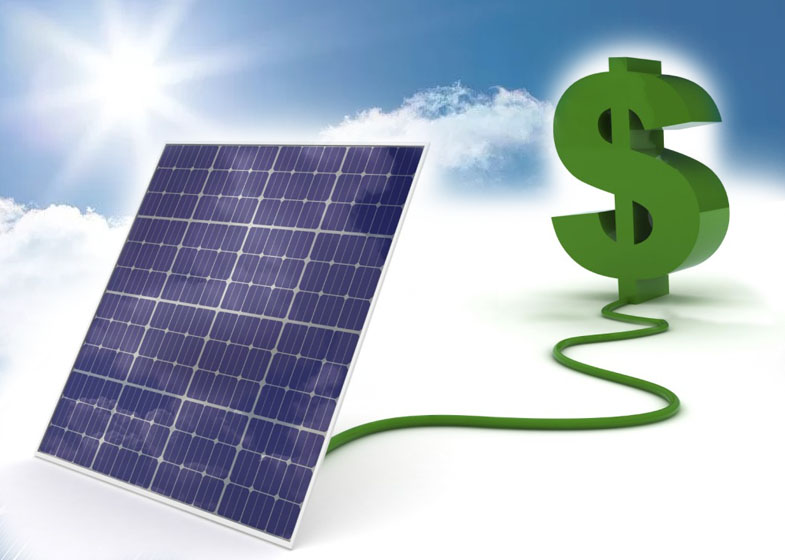Green energy and its benefits are on everyone’s lips. The uncontrolled burning of resources leads humanity to a dead end, and many people understand this danger. However, when considering the possibility of installing solar panels for a home , one inevitably has to solve the problem of payback. How effective in terms of generated power and finances will be the solution for a particular user – that is the question, which we will answer in detail in this article.
Who and how is it beneficial
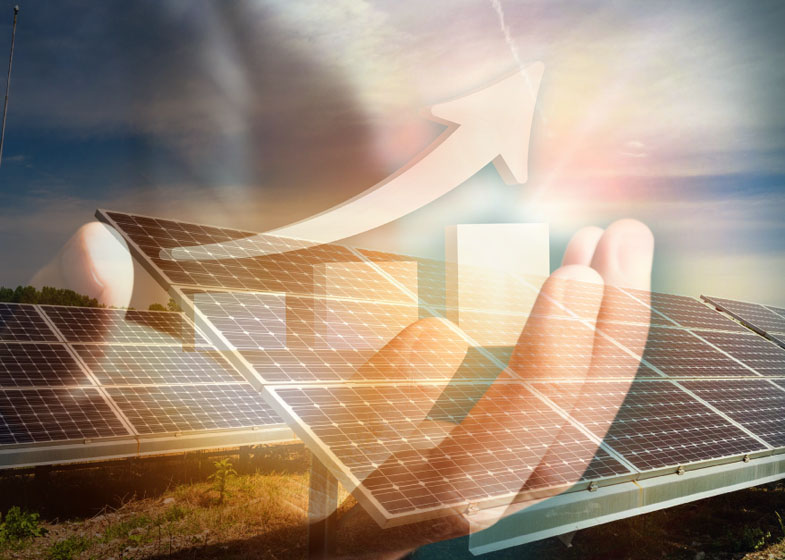
Authoritative sources unanimously claim that solar panels are our future. A properly designed station can significantly reduce the cost of energy consumption, and ideally become the only source of generation.
Panels are already appearing on the roofs of private houses, making the distant prospect of energy supply a reality. In many cases – even in temperate climates – solar panels not only cover the need for electricity, but also provide an opportunity to earn money. The surplus generated by the station can be sold to the state under the feed-in tariff program. By the way, the ratio of the price per kilowatt is tied to the euro exchange rate, that is, the income remains stable despite any upheavals in the national currency market, and this is good news.
There is another nuance of regulation that affects profitability, and it is associated with an increase in the number of owners of autonomous stations. The state is gradually reducing the tariff as the cost of the systems decreases. When deciding to buy solar panels in 2014, a user of 30 kW equipment paid more than 30 thousand USD. After only 4 years in 2018, a similar system cost about 20 thousand USD, “losing weight” in financial terms by 30%.
The current tariff depends on the date the station is put into operation, that is, the earlier you purchase and launch the panels, the more profitable they will be.
Today, the feed-in tariff program has been approved until the end of 2029 with a fixed tariff and a link to the euro. It is assumed that after this date it will be possible to trade energy at a market price, and transactions can be concluded not only with the state, but also with anyone who wants it, for example, with a neighbor.
ROI
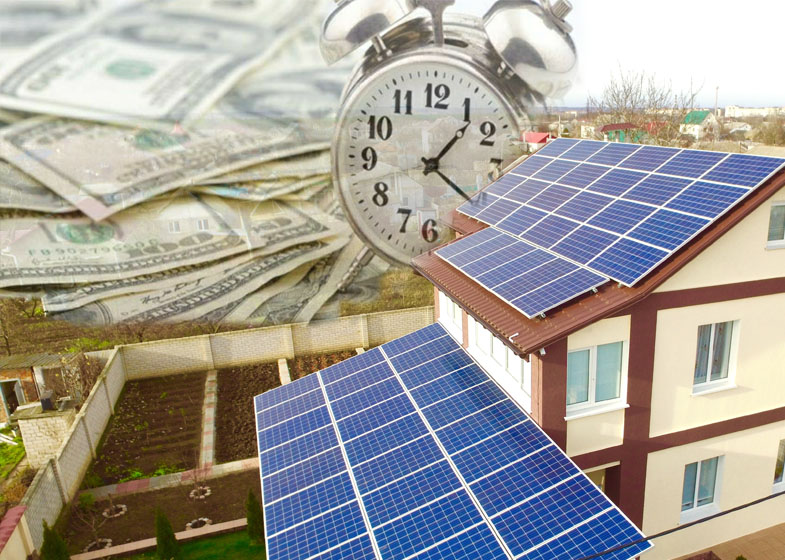
Подсчитав итоговую стоимость солнечных батарей, необходимо понимать, что это не банковский вклад. Хотя, с учётом примеров из истории и инфляции, вложение выглядит даже надёжнее. Судите сами:
- On average, the life of solar panels is 30 years (minimum 20 years – the period depends on the manufacturer).
- Investments are returned in 5 years.
- The owner receives net profit for 15-25 years.
The operation of the equipment must be calculated taking into account the service of all types of devices. Already today, branded inverters are guaranteed for 10 years. The frequency of battery replacement depends on the selected scheme. Modern LFP batteries (LiFePO 4 ) have been operating for 25 years.
In addition, the calculation must include climatic and geographical conditions, the main of which are the length of daylight hours, the height of the Sun above the horizon, and the number of clear days per year. For Ukraine, the following ratio can be taken into account: each kilowatt of solar panels generates 1100 kWh per year.
Финансовая выгода от установки панелей объясняется не только получением дохода по зелёному тарифу. Официальные данные ежегодной инфляции с 2010 года дают нерадостные цифры 4–12%, в эту статистику входит и рост цен на подачу электроэнергии. Чем стремительнее растут аппетиты компаний–монополистов, тем выгоднее оказывается собственная станция.
Solar energy vs bank deposit
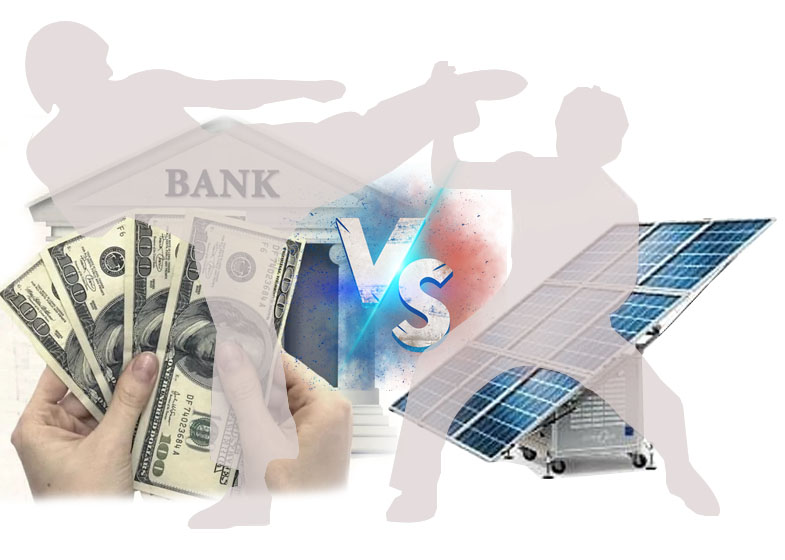
Buying solar panels is one way to protect against inflation. Leaflets with the conditions of bank deposits promise the same benefits, but it’s better not to take a word and compare both offers in detail:
- The current rate in foreign currency is at the level of 3-4% per annum, while the sector maintains a steady downward trend in interest rates. The instability of the national banking sector does not make the investment unshakable. Today the income is “dripping”, and tomorrow everything is possible.
- The solar station immediately after launch works for you. After only 5 years (or earlier, as detailed below), the owner begins to receive a net profit. The amount depends on the needs and power of solar panels in kW . In fact, the system is in the hands of the user, and not with a third-party organization, therefore, only by this fact, it is reliably protected from financial, political and economic crises.
In order for the investment to be truly profitable, it is necessary to accurately calculate the system and select equipment wisely so that there are enough opportunities for energy production for at least 20 years.
What solar panels to buy, so as not to miscalculate
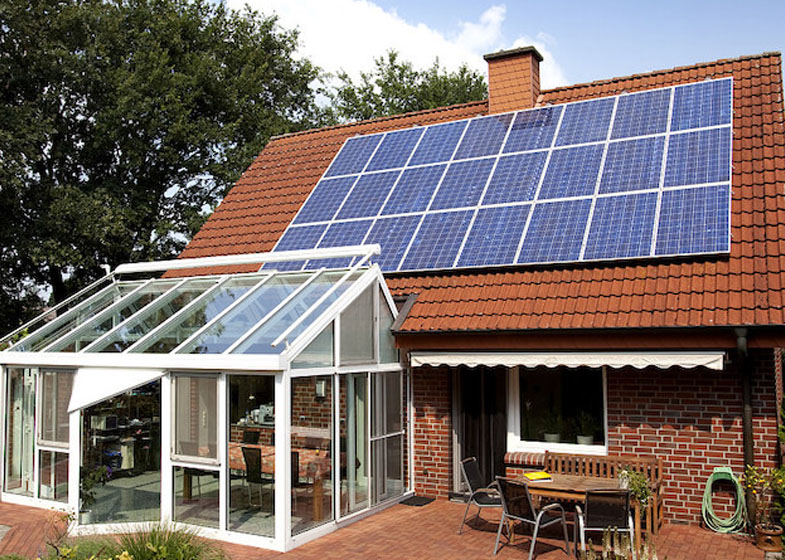
Consider two options based on the minimum needs (power 20 kW) and the maximum permitted performance of 30 kW.
In the first case, the purchase will cost ~12,450 USD (approximately 122 m 2 will be required for installation).
| Necessary systems and operation | Cost, USD (average) |
| Solar panels on the example of British Solar (54 units) with a 25-year warranty | 5800 |
| Afore 3-phase inverter (10 year warranty included) | 2000 |
| Multi-tariff energy meter ACE 6000 | 500 |
| Fasteners | 1300 |
| Protective systems | 650 |
| Installation and launch | 1700 |
| Registration of the station and feed-in tariff | 500 |
The system annually produces 24,000 kWh with a yield of about 3.6 thousand USD. The station will pay back the investment in 6 years.
In the second option, the amount will be ~18,000 USD (the installation area is about 180 m 2 ).
| Necessary systems and work | Cost, USD (average) |
| Solar panels on the example of British Solar (80 units) with a 25-year warranty | 9500 |
| Afore 3-phase inverter (10 year warranty included) | 2700 |
| Multi-tariff energy meter ACE 6000 | 500 |
| Fasteners | 1900 |
| Protective systems | 750 |
| Installation and launch | 2100 |
| Registration of the station and feed-in tariff | 500 |
Annual energy generation reaches the level of 39 thousand kWh with a yield of about 5.8 thousand USD, that is, the payback of the project is just over three years.
Solar panels for the home work not only for their intended purpose. The installation of equipment immediately raises the value of the property, making the offer more attractive to buyers. The feed-in tariff is valid until 2029, after which it will still be possible to sell surplus energy, but already on the market. By relying on bank deposits, you hand over your income into the hands of third parties. When buying solar panels, you manage your money yourself, and with virtually no risks.
